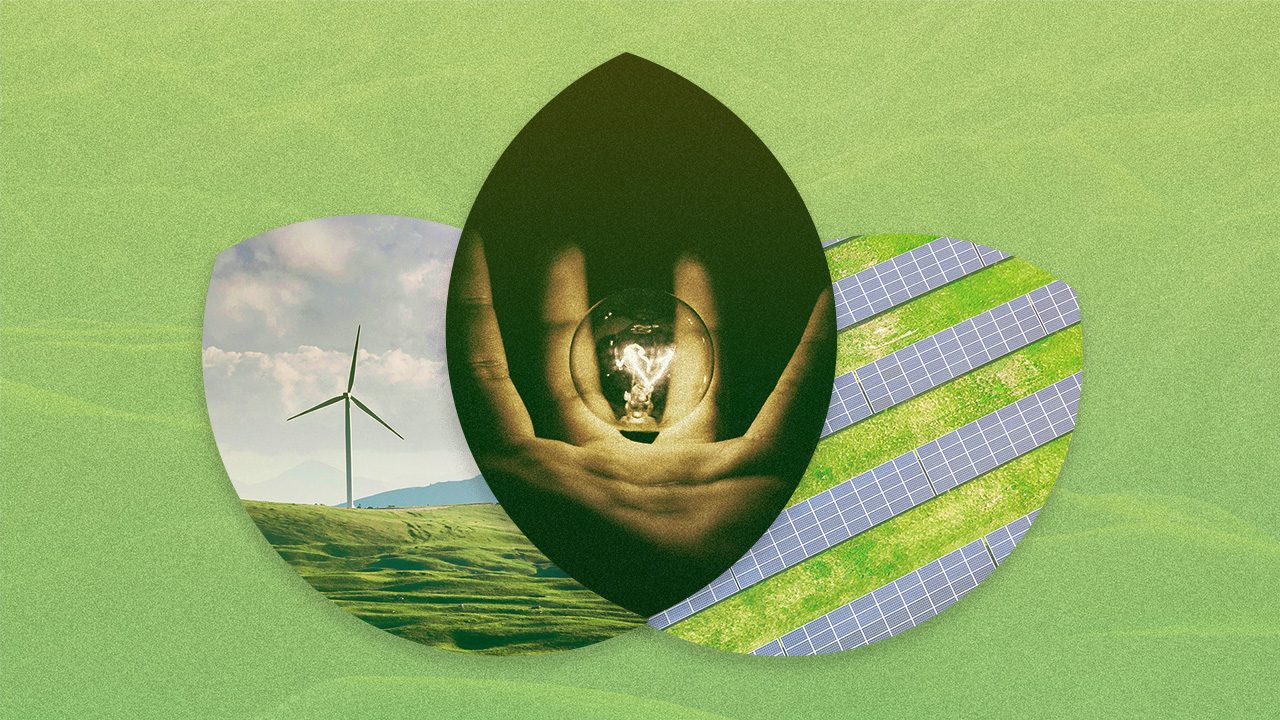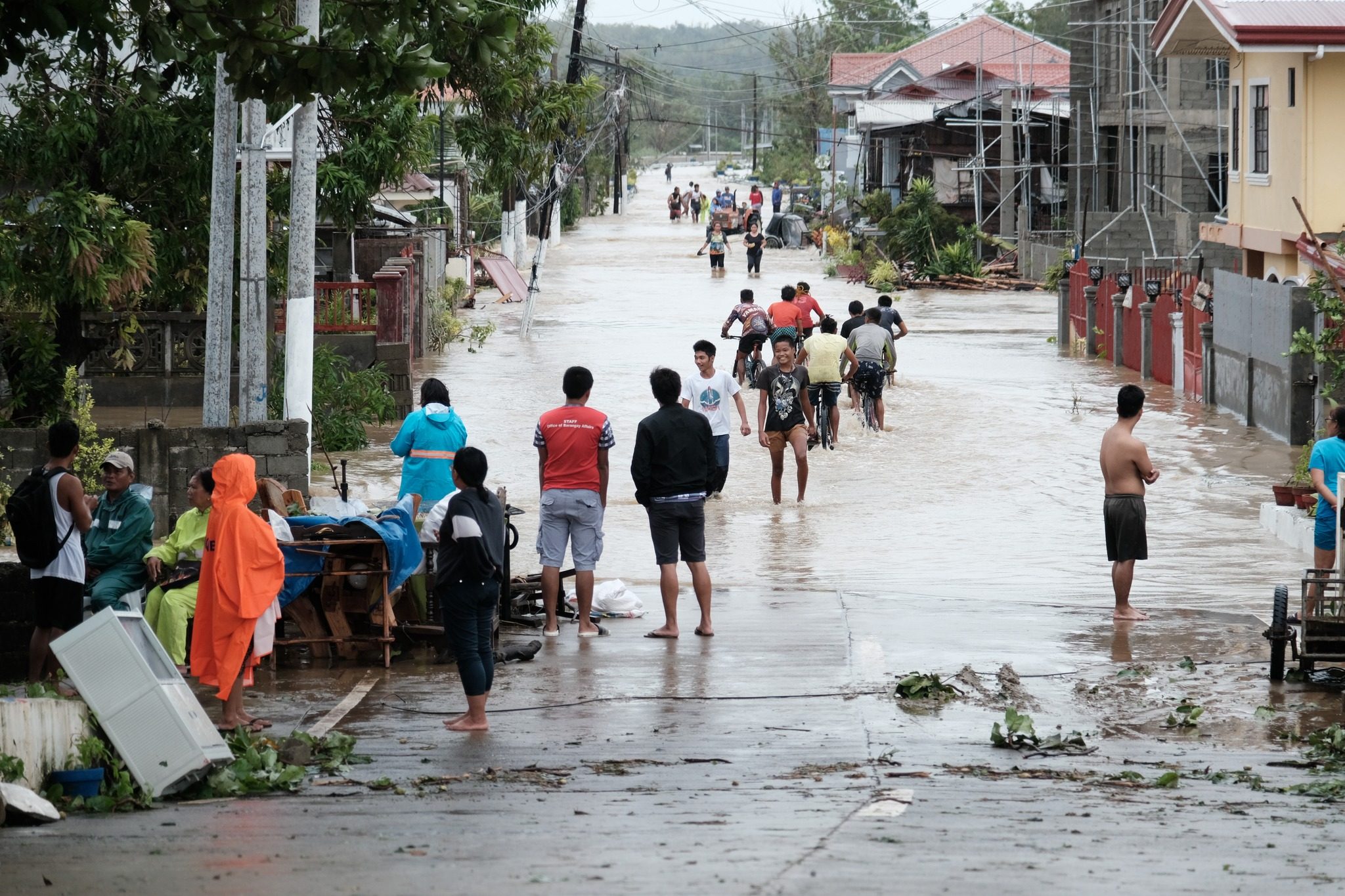SUMMARY
This is AI generated summarization, which may have errors. For context, always refer to the full article.

In a race against time, businesses and governments around the world are scrambling to transform one of the most necessary sectors yet the biggest pollutant of them all: energy.
In the Philippines, business tycoons are even teaming up for a liquefied natural gas (LNG) facility in Batangas, signaling efforts to quickly mainstream energy transition. LNG is often regarded as a transitional fuel between coal and renewable energy sources.
Each passing year, the threat of breaching 1.5 degrees Celsius in global temperature becomes increasingly real. As the world warms, the world becomes more vulnerable to extreme weather events, rising sea levels, food insecurity, and biodiversity loss.
The world relies on the burning of fossil fuels to generate electricity. Because of dirty energy sources, the sector accounts for three-quarters of global emissions.
Now, countries are scrambling to get the critical minerals needed to build renewable energy sources such as solar or wind power to hit net-zero targets by 2050. But the rush to transition could, in fact, harm the environment and workers, especially those employed in the fossil fuel industry such as coal miners.
Clean energy transition needs to happen faster. But first, it has to be just. That’s why the climate movement, while demanding the urgent shift to renewables, also demands a “just energy transition.”
But what does that mean?
It’s a term thrown around in climate conferences, understood mostly by advocates but remaining a buzzword for many people.
Where did the idea come from?
Francis dela Cruz, advisor for policy group Institute for Climate and Sustainable Cities, told Rappler in an interview: “The energy transition is about looking after those who will be displaced by the transition away from fossil fuels like coal into renewable energy sources.”
Dela Cruz, who has been advocating for just energy since the 1990s when discussions revolved around consumer rights, said he first got wind of the concept during the 2014 United Nations (UN) Conference of the Parties held in Lima, Peru.
It was the time when the climate movement and labor unions came together, according to Dela Cruz. “That’s why they were talking about retooling, reskilling.”
Simply put, with just energy transition, workers are placed at the heart of a low-carbon economy.

A labor issue
How will this work?
Private companies, for example, will make sure workers of coal-fired power plants slated for closure will get support. Or the government trains displaced workers and women on, say, assembling and operating equipment found in solar farms.
According to the UN, there is no strict roadmap to implement just transition. “Just transition should not exacerbate inequalities and must be undertaken in a way that supports affected workers,” the UN wrote in a 2023 report.
The international body stressed that there needs to be social safety nets in place and that governments must create decent jobs.
It emphasized the role that labor unions play in achieving net-zero targets. Labor unions can initiate dialogues between employers and workers on compensation during transitions, and they can organize to raise workers’ issues to concerned government agencies.
Citing an example, the UN report said, “In the Philippines, a national trade union federation works with energy cooperatives to promote renewable energy.”
The country wants to increase by 2030 renewable sources in the energy mix at 35% then even higher at 50% by 2040. Under the clean energy scenario in the Philippine Energy Plan, transformation in the sector should reduce greenhouse gas emissions by at least 12%.
Renewables not without problems
Beyond the labor issues, the energy transition will also affect and can damage the environment.
The increased demand in critical minerals needed to shift to renewables will mean more extraction. This could exacerbate labor and human rights abuses and environmental degradation already entrenched in the industry if left unregulated by governments.
“When shifting away from fossil fuels towards renewable energy, the transformation of energy systems must also ensure responsible minerals extraction, and must not simply shift exploitation and land grabs to new areas,” the UN report read.
Solar and wind farms need vast tracts of land. Vast lands, mostly those used for agriculture, are being eyed by investors for conversion. For instance, in Tarlac, a largely agricultural province, rice farms have already been converted to solar farms. A cost-benefit analysis released in 2021 noted that while there are considerable economic benefits in the conversion of rice farms to solar farms, rice supply for more than 200,000 people a year would have to be foregone.
In addition, wildlife habitats are at risk of fragmentation. When tracts of land get converted eventually to solar and wind farms, this could alter birds’ migration patterns.
The National Oceanic and Atmospheric Administration said offshore wind power development could affect behaviors of marine species, life cycle stages, and release contaminants that could be absorbed by marine life.
How justice should look
Despite the new problems that arise with the advent of renewables, just energy transition is opening opportunities for humanity to change existing inequalities.
In a report published in 2022, development organization Oxfam International wrote that given the transition, it’s possible for the world to achieve universal energy access, create green jobs, and protect consumers from volatile fuel prices.
“Without a focus on justice, the transition risks undermining human rights and entrenching existing and historic injustices and inequalities,” the report read.
The transformed energy sector that is a product of a just transition must be affordable, reliable, and accessible to the public. How can this happen? There are a few ways:
Poor countries get financing from both public and private sectors. Countries most vulnerable to climate change impacts are often those that are unable to afford the high upfront costs of clean energy.
More than $1.7 trillion was invested in clean energy in 2023, according to the International Energy Agency (IEA). The trend continues to increase as powerful countries make strides in investments and energy and security goals.
However, the IEA found that investment remains uneven across the world. Leading the investments is China, followed by the European Union, then the United States (US). China and the US are among the top polluters in the world.
“Advanced economies and China account for 80% of global spending and for almost all of the growth in recent years,” the IEA wrote in its report.
Majority of these investments come from the private sector, according to the IEA.
During the last UN climate summit in Dubai, several countries and organizations launched the Coal Transition Accelerator, which aims to “unlock new sources of public and private financing to facilitate just transitions from coal to clean energy.”
Financing will not only support the establishment of renewable sources, but also the improvement of a weak grid infrastructure that delays connections of already existing farms. This is a problem that pesters not only the Philippines but other countries, too.
This is the same underlying principle of the loss and damage fund, where rich polluters help vulnerable countries mitigate the harmful effects of climate change. (READ: Phaseout of fossil fuels an aspiration ‘we need to afford,’ says DENR chief)

A responsible extractive industry that recycles. The extractive industry is undeniably at the core of the energy transition.
The industry provides the critical minerals needed for components in clean energy, like batteries and solar cells. For example, most electric vehicles now use lithium-ion batteries.
While damage can only be minimized, it will make more economic and environmental sense to recycle the materials mined. For instance, copper, used in cables, turbines, and generators, could be recycled without loss of properties.
Recycling materials can help advance a circular economy in the mining and metals industries, minimizing waste and making sure emissions are not for naught.
However, recycling efforts must be increased to keep up with the fast-tracked extraction of minerals.

Groups, communities should benefit and have a say in development. This does not only mean indigenous peoples and women perfunctorily attending public consultations.
Oxfam International said in a 2022 report that these meetings should “harness local knowledge and real-world experiences to improve the design of [programs] and make them more relevant to affected communities.”
Under Philippine law, indigenous peoples are given agency through free and prior informed consent (FPIC), a mechanism that attempts to enforce their rights over development projects intruding on their territories.
A decade ago, the Department of Environment and Natural Resources and German development agency Deutsche Gesellschaft für Internationale Zusammenarbeit came out with an assessment of the FPIC in the Philippines.
The report said the country’s FPIC is vulnerable to circumvention because of “tricky” mechanisms like community-initiated projects or the certificate of no overlap.
More recent stories on mining and dam projects showed that nothing much has changed in the usual accounts of indigenous peoples imperiled by development projects. Vast ancestral lands are often regarded as spaces that can be utilized for further development. (READ: Indigenous rights clash with solar power project in Ilocos Norte)
Aside from including communities, they should be given energy access, too. When communities can access reliable and cheap power, Oxfam said this could boost productivity of local enterprises, help children finish school, and empower women to work outside the home.
A case study in the report is the off-grid Hilabaan Island in Eastern Samar. Oxfam and a local organization partnered to install six solar-powered streetlights and an off-grid solar-powered system.
The report said the system had been servicing 124 households, increasing security at night, and making care work more efficient for women.
Detecting this problem to be nationwide, Senator Risa Hontiveros filed a bill back in 2022 establishing a solar home system financing program in remote and rural areas in the Philippines. The bill remains pending at the committee level.
“Transition is not without negative impacts,” said Hontiveros during the launch of the Responsible Energy Initiative in January. But she also added that there’s no going back to the old ways, as “relying on fossil fuel is not only [unsustainable] but [also] anti-consumer.”
The Responsible Energy Initiative Philippines, consisting of groups across the renewable energy supply chain, seeks to shape an “ecologically safe and socially just renewable energy transition.”
Making a living
A just energy transition should not only account for fossil fuel industry workers or residents in need of affordable sources of renewable power; it must also power the farmers and fisherfolk who rely on transport and electricity to eke out a living.
Dela Cruz said a fisherman from Suluan Island in Eastern Samar, for example, will not care about the amount of greenhouse gas emissions he emits by using a diesel generator if that enables him to fish out at sea.
“The context of energy is not just climate, right?” he said. “It’s livelihood.” – Rappler.com
Add a comment
How does this make you feel?

![[OPINION] Making a case for 100% renewable energy: The 1.5°C goal in the PH power sector](https://www.rappler.com/tachyon/2023/12/tl-1.5C-goal.jpg?fit=449%2C449)














There are no comments yet. Add your comment to start the conversation.